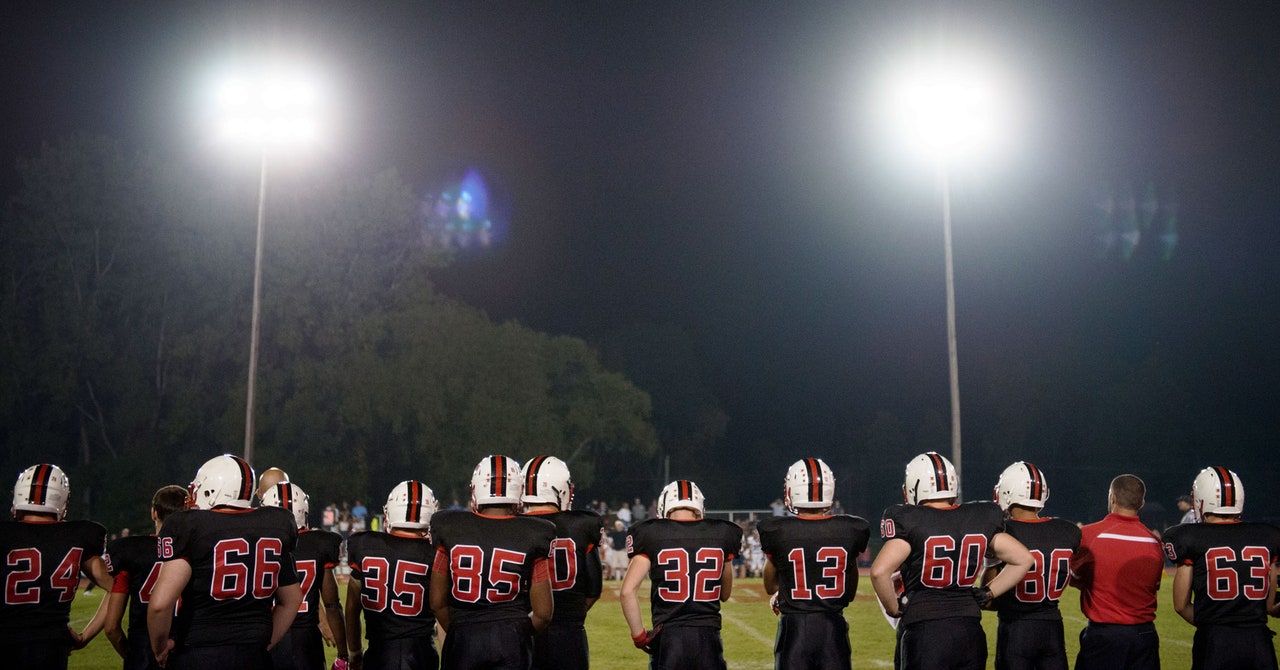
McKee, who is also the director of neuropathology for Veterans Affairs Boston, began studying the brains of former NFL players 15 years ago. She couldn’t believe what she saw: big lesions in the crevices of the brain, dotted with abnormal protein clusters. A huge Packers fan, McKee has watched a lot of football games. But, she recalls, until then, “it never occurred to me that they were damaging their brains, because you don’t see it on the field. They’ve got the helmets. They look invincible.”
Researchers now know more about what is happening to the brain beneath the helmet. The jostling of the brain tugs at neural tissue, placing cells and blood vessels under stress. Tau proteins, which stabilize the scaffolding that gives neurons their structure, fall off when a cell is stressed. These fallen proteins pile up inside the cell, “a sort of toxic clump,” as McKee describes it. Eventually, the pileup overwhelms and kills the cell, leaving neurofibrillary tangles, which appear as ominous dark smears under a microscope. These tangles, which also appear in Alzheimer’s disease, make it harder for neurons to communicate with each other, causing memory problems.
Meanwhile, injured blood vessels compromise the sacred blood-brain barrier that normally protects sensitive neural tissue from irritating molecules flowing through the rest of the body. The resulting irritation causes inflammation, which induces more tau clumping, initiating a downward spiral of neurodegeneration.
To screen the donated young athletes’ brains for CTE, the researchers looked for tau, as well as signs of larger-scale problems like inflammation, hardening or deterioration of blood vessels, and changes to white matter, which contains the connections between neurons. They also interviewed the donors’ loved ones to learn more about their behavior and cognitive symptoms while they were alive. All of them had experienced issues like memory loss, depression, and impulsive behavior.
Of the 152 brains examined, 63 were posthumously diagnosed with CTE. The vast majority were still in early stages of neurodegeneration, but three of them—one belonging to a former NFL player, one to a college football player, and one to a professional rugby player—had reached the third of CTE’s four stages. Notably, another brain with CTE belonged to a 28-year-old women’s collegiate soccer player—the first case of its kind.
The youth of these players also allowed the research team to rule out aging as the cause of the damage. Aging, as well as high blood pressure, cardiac disease, and other neurodegenerative problems, can all damage brain tissue. But in the sample used for the new study, all of the athletes died between the ages of 13 and 29. “These are pristine, beautiful brains,” McKee says.
The fact that so many of the donors’ families had noticed mood and memory changes—regardless of whether their child was ultimately diagnosed with CTE—might be an artifact of the study’s sample pool. Families were simply more likely to donate to the brain bank if they had noticed unusual behavior in their child. But McKee says this also suggests that some of the symptoms experienced by these young athletes are not always caused by CTE, but may still reflect the aftermath of head trauma. Chris Nowinski, a study coauthor and CEO of the nonprofit Concussion Legacy Foundation, remembers struggling with chronic symptoms after the concussion that ended his pro wrestling career in his twenties. In cases like his, concussion-related problems like sleep impairments, or the difficulties of coming to terms with life as an injured or retired athlete, are likely the root cause of the mental health issues—not necessarily tau pathology.

